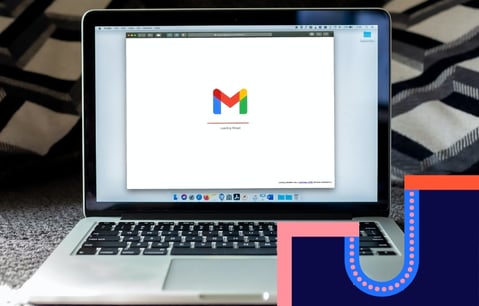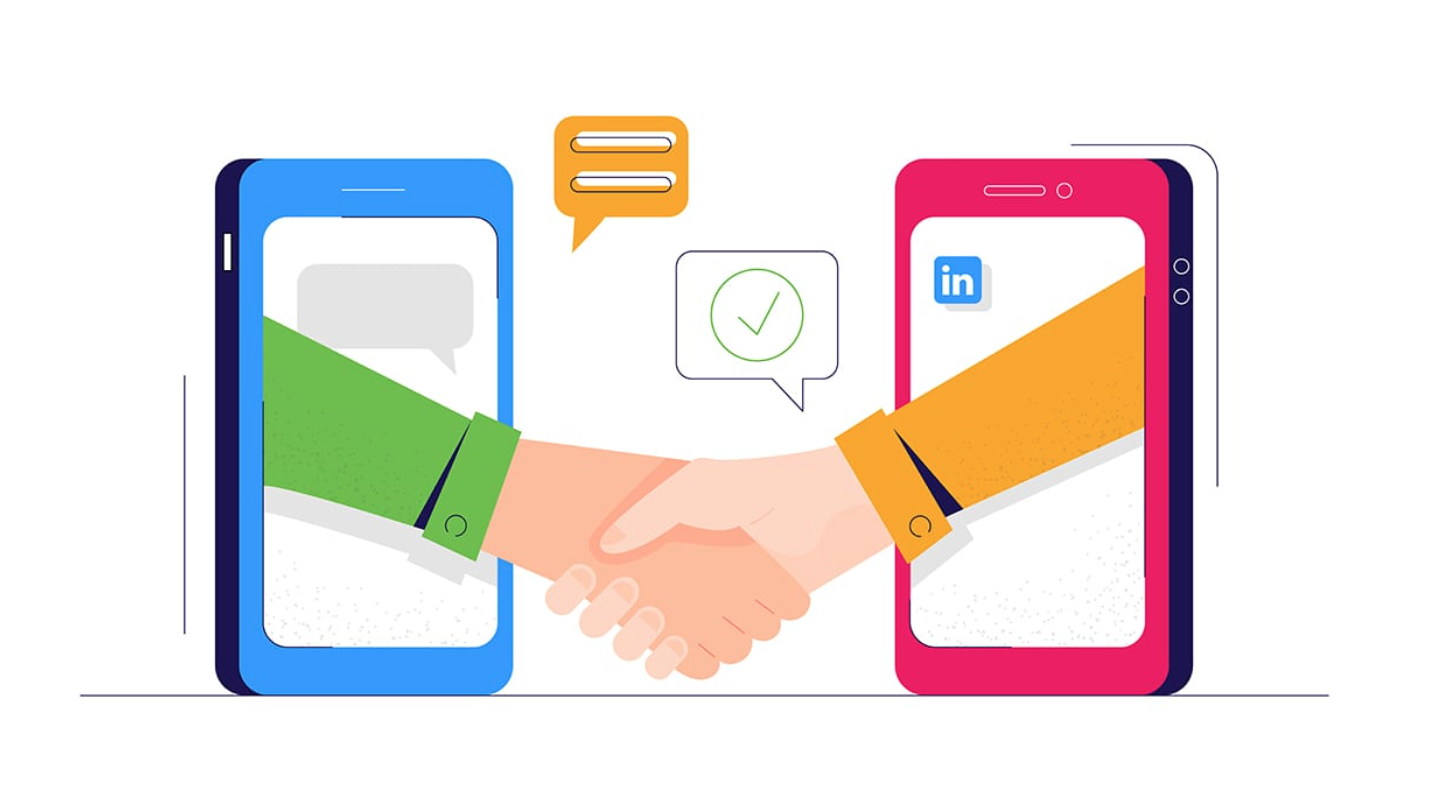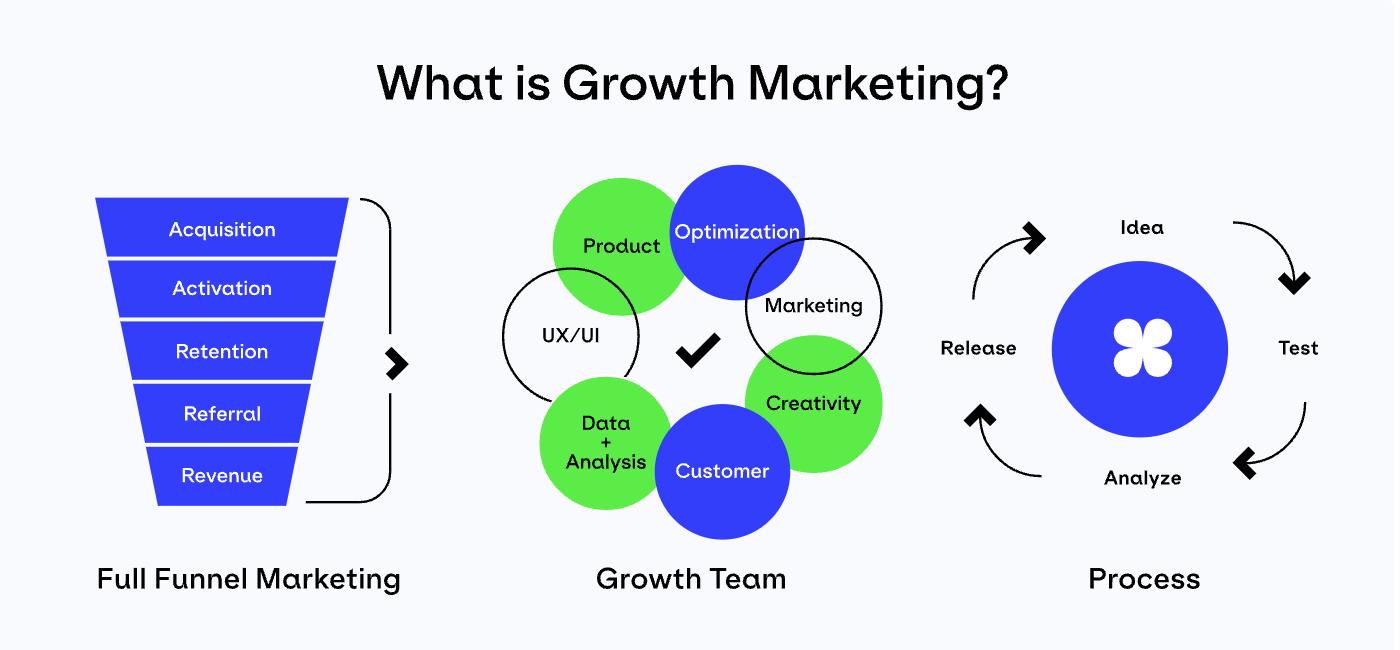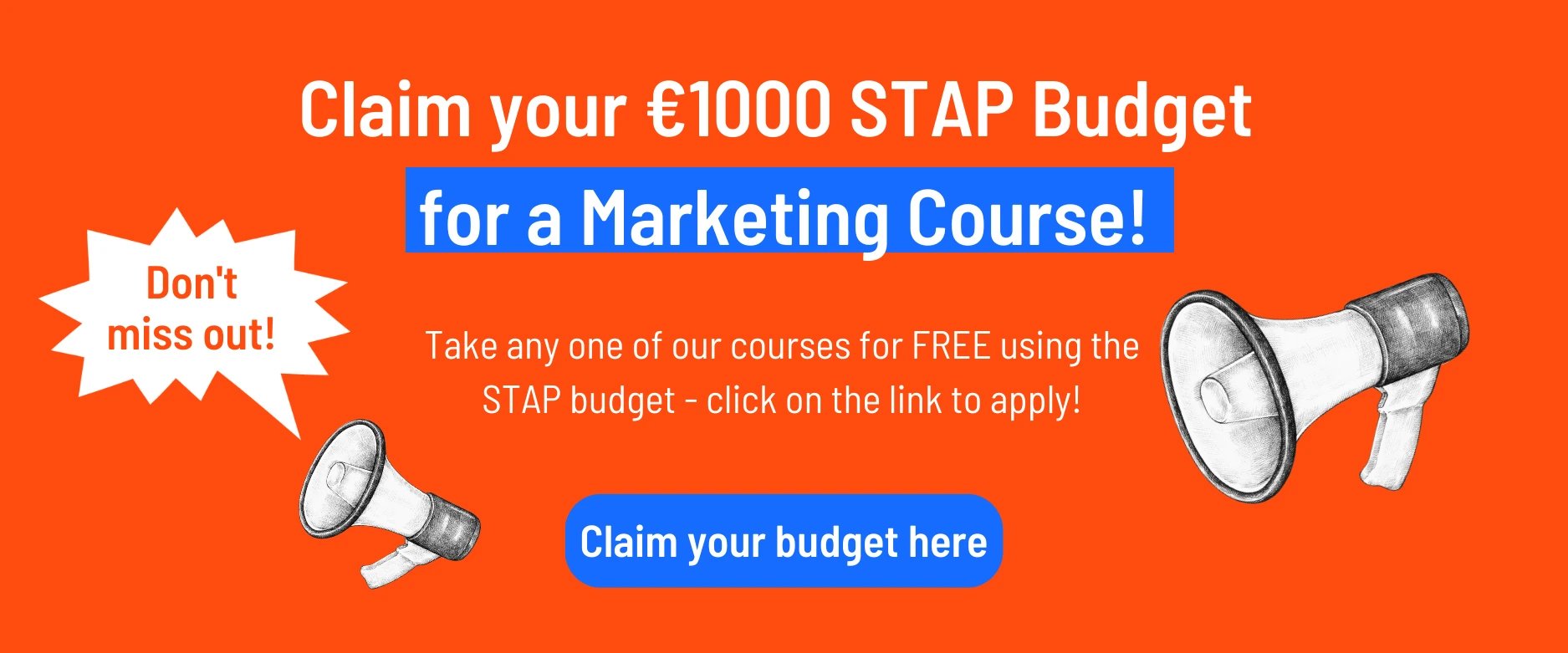What is Direct Marketing? Benefits, Types and 5 Tips to Get Started

If you’re wondering how to communicate directly with your target customer, without having to go through advertising intermediaries or third parties, then you're going to adore direct marketing.
In this article, we’ll explain what direct marketing is, what the benefits are and how you can get started with a direct marketing strategy.
What is Direct Marketing?
Direct marketing is a promotional method that targets specific customer segments to give a response or take action. With direct marketing, you promote a brand, product or service directly to customers who are pre-qualified as likely to engage. Because your target customers have already shown an interest or fit the intended demographic, direct marketing is an impactful and highly measurable marketing method. It’s not concerned with educating audiences at the top of the funnel and instead, focuses on those ready to take the next steps.
Direct marketing come in many forms and uses a mix of both online and offline channels, a few of which we’ll explore later. Some of these mediums are brochures and flyers, email marketing campaigns, SMS marketing, magazine ads and social media - there are lots to choose from.
As an example, a company selling surfboard wax might send out an email blast to their customers who are likely to need it. Or a company might target customers on Facebook with an ad promoting life insurance to older demographics, more likely to engage.
11 Benefits of Direct Marketing

Whether you’re asking customers to register their interest, visit your website, sign up for an event, purchase a product or subscribe to a service, direct marketing’s intentional strategy brings some notable benefits for getting noticed and prompting action.
Here are the top benefits of direct marketing:
1. Highly targeted
The leading benefit of direct marketing is just how targeted it is. By organising your customer data and segmenting it into categories such as age, interests or occupation, you can quickly compile a locked-and-loaded prospect list ready for targeting. As long as your company has consent from customers, you’re good to go!
2. Launch campaigns with speed
Let’s say you want to send out an SMS campaign, within hours you can filter and sort through the data and launch a promotion. The same principle can be applied to many online channels too like email or social media ads. This kind of speed in marketing is unusual, as many tactics require lengthy planning and sorting before they’re ready.
3. Personalisation
Direct marketing also allows for highly-personalised messages. Think about a brochure landing through your letterbox, often these will be addressed to you personally to build trust and help customers feel valued.
4. Maximise budget
Because you’re marketing to customers who have expressed an interest or are likely to engage, marketing dollars tend to go further. Rather than generalising and aiming for a wide spread, direct marketing can be executed with a narrow and specific audience. This helps keeps costs under control and maximises ROI, especially if using online channels.
6. Prioritise information
Segmenting your data allows you to see what’s important to customers. If you know the interests or historical behaviours of a demographic, you can tailor the messaging to reflect them. This reduces wasted copy and increases the impact of your promotion because it’s relevant and valuable to the customer.
7. Drive customer loyalty
Want to make someone feel special? How about sending them a personalised invite to an upcoming event? Or an exclusive discount code. Or a members-only promotion. Direct marketing strengthens customer loyalty when you make them feel valued and special.
8. Target new business
Moving away from your company’s data for a moment, let’s instead ponder on purchasing data from reputable sources. Prospect lists from compliant companies can give you access to untouched potential. Sending out direct marketing campaigns to these lists opens up the door for new business opportunities, which is no bad thing we’re sure you’ll agree.
9. Highly measurable
With direct marketing, you know exactly who you’re marketing to and how much it costs. You can track campaigns and see data like who is responding to ads or taking action on a promotion. This makes it a whole lot easier to assess ROI and determine success.
10. Retargeting old customers
If your company has been around for while, there’s a solid chance you’ll have dormant customers - people who haven’t purchased or interacted with your brand for months, even years. By using direct marketing, you can retarget this group of customers with a campaign to reignite their interest and drive action.
11. Streamline the buying process
Let’s say you’re a software provider, you’ll likely have a suite of products to offer at any one time but today, you really want to tell people (and persuade them) to look at a specific product. Through direct marketing, you can tailor a message that focuses solely on this and makes it a cinch for customers to move ahead. Whether that’s a link in a text that takes them straight to a landing page or a flyer with a timed-discount code, you can get the right message to the right people at the right time.
4 Drawbacks of Direct Marketing

Like all things, there must be balance! Direct marketing is a powerful tool but there are pitfalls to consider.
1. Overspending
If you don’t analyse results properly it can become costly, quickly. Just because you didn’t get the intended response from a marketing push, you shouldn’t rush to go again. Analyse the data and see where adjustments can be made before committing to another campaign.
2. Intrusive
Particularly for telemarketing, no one wants to be bothered in the comfort of their own home past a certain time. Or for that matter, repeatedly. Sometimes persistence can be the difference between a sale or a flop but be mindful of when and how you are contacting customers so as not to alienate them.
3. Environmental impact
Direct marketing benefits from online (digital) and offline (physical) methods. A popular offline method is direct mail marketing - like brochures, flyers and postcards. While there are upsides to sending physical products to customers (like personalisation, building trust, and tailoring messages) you have to be wary of the potential environmental impact you’re having. Costs tend to be higher for direct mail too but from a sustainability standpoint, customers may not be receptive to it if they think it’s doing more harm than good.
4. Legal Compliance
GDPR (General Data Protection Rules) came into effect in May 2018. This affects how companies collect and store data, and also how customers are marketed. The bottom line is, a company needs express permission to contact customers. This isn’t as big of an issue as it first appeared a few years ago, it just requires a bit of care and attention to make sure contact is compliant.
What are the Types of Direct Marketing?

By now, you’re aware of how direct marketing can be used to target interested customers and increase your chances of converting them. We mentioned at the beginning of this article that there are a few methods to choose from. Let’s explore those now.
1. Telemarketing
One of the oldest forms of direct marketing, telemarketing involves two methods for contacting customers; inbound and outbound. Inbound refers to customers calling you or initiating a time to call back. Outbound refers to calling the customer, sometimes as a “cold call” (without pre-qualification) and sometimes to follow up on leads or campaign prospects.
2. Email marketing
A tried and trusted marketing method that’s cost-effective and measurable. Email marketing refers to sending out promotional ads, newsletters or offers to qualified prospects on your email list. Email marketing is used for purchased customer data too.
3. Text (SMS) marketing
SMS marketing is one of the most reliable direct marketing methods. As most people own and use a mobile device often, you can be fairly certain they’ll receive your message. Contact customers directly for ad promotions or links to key events and websites, appointment reminders and other conversion-oriented communications.
4. Direct mail marketing
Letters, brochures, catalogues and flyers are all examples of direct mail marketing or direct selling. Even in the digital age, this method still holds immense value for companies wanting to craft personalised marketing messages that hit the customer in the most direct way possible - their home.
5. Social media marketing
Social media marketing is nothing new for promoting brand awareness and advertisements. But in the context of direct marketing, companies can utilise these cost-effective platforms to appeal to specific demographics through targeted ads or even direct messaging services.
6. Direct response marketing
This refers to advertisements through radio, television and magazines or newspapers. These marketing channels still garner lots of attention and messages can be tailored to suit target audiences. Calls-to-action in direct response marketing tend to be strikingly clear and direct.
Tips to Get Started With Direct Marketing
Despite the array of choices, building a direct marketing strategy isn’t overly complicated. All you need to do is follow a few golden rules and you should be up and running in no time!
The first step is the most important and defines what direct marketing is all about - appealing directly to the customers who want it most. Finding your target audience involves segmenting customer data and filtering key information such as; age, interests, dislikes, income, location, education, family size and more.
We’ve already spoken about the different types of direct marketing but now you have your target audience in mind, it’s time to pick the most suitable one. Whether it’s email, SMS or print media, knowing which marketing channel your customers are most likely to respond to will be key to a successful campaign.
Define how much you’re going to spend to avoid scope creep. Part of your budget consideration will be determined by the marketing channel you choose, as some methods like print media will cost more than digital channels like social media. Having a budget helps measure ROI effectively to see exactly how much you’re spending per customer response.
Now it’s time to create the offer. If you’re sending out flyers or brochures, think about eye-catching designs and visual flair. If you’re opting for email or SMS, make sure the copy stands out and has a definitive CTA. Above all, be clear, personal and pack in value!
Boom! You’ve executed a direct marketing campaign and now all that’s left to do is sit back and watch the magic unfold. Use analytics tools and software to measure customer responses and identify where shortcomings are. The data can be interpreted and optimised for future campaigns. As a follow-up, send out surveys and gather customer feedback for a more personal and accurate representation of customer insights.
Conclusion
Direct marketing continues to be a positive marketing force. With the advent of sophisticated technology and deeper customer insights, direct marketing leverages online and offline channels to appeal to target customers. With it, your company can build customer loyalty, improve ROI and bottom lines, and offer an overall more personalised customer experience.
Become a Certified Digital Marketer!
Master the fundamentals of digital marketing as you learn about:
- What it is and why we need it
- Customer personas and journeys
- How to set up and use tracking and analytics (such as Google Analytics)
- Organic content marketing (SEO)
- Paid marketing and targeting using ads
- How to optimise sites and landing pages for maximum performance
See the full course overview here.
Learning with Growth Tribe couldn’t be easier. All of our courses are designed to be flexible for the learner with self-paced content so you can manage your time and learning, to best suit your lifestyle.
Join a community of over 35,000 certified alumni who share a passion for growing their skills and positively impacting their careers.
Categories
- Business & Innovation (72)
- Growth & Marketing (61)
- Data & Analytics (25)
- UX Design (13)
- Alumni Stories (11)
Related articles
Latest articles
Boost your Revenue Growth using LinkedIn Social Selling
In a digital age where connections mean everything, leveraging...
The Power of Collaboration: Enhancing Team Performance Tactics
As organisations navigate complex challenges and strive for...
The Ultimate guide to boost organic growth in 2024
Imagine organic growth as the business equivalent of sculpting...
The best 2024 Business Development Guide
What exactly is business development, and how does it differ from...













